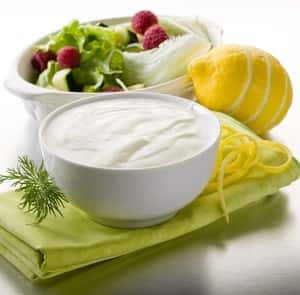
Q. I have infrequent vaginal yeast infections, but I prefer not to use creams like Monistat. They were once prescribed by doctors and now are available over the counter, but I prefer a more natural approach.
I heard about douching with plain yogurt. I was a little squeamish at first, but have tried it and it works fairly effectively.
Is this a legitimate natural remedy? How does the medical community see it? Should I worry about recurrences?
A. Vaginal yeast infections (candidiasis) cause a great deal of discomfort and disruption. The primary symptom is an intense, almost unbearable itch. The yeast Candida is a normal occupant of the vaginal vault. Frequently, however, when women are given antibiotics, they will develop a vaginal Candida infection. The antibiotics have no effect on Candida, but they do seem to wipe out other occupants, and yeast cells rush to fill the vacancies. Oral contraceptives can have the same effect on some women.
There are lots of cures available, all of them likely to work at least temporarily. Monistat (miconazole), either as a cream or a vaginal suppository, usually gets the nod. Alternatives include other antifungals such as clotrimazole, butoconazole or ketoconazole. Cure rates are supposed to range from 80 to 90 percent, but recurrences are not uncommon.
Many women like you have been looking for more natural approaches. They have been douching with yogurt to treat yeast infections for decades. There are a number of websites that promote this practice and provide detailed instructions. That said, we have been hard put to find substantive studies to support this approach. One group of researchers at Sohag University in Egypt published the following article: “Bee-honey and yogurt: a novel mixture for treating patients with vulvovaginal candidiasis during pregnancy” in the Archives of Gynecology and Obstetrics (online, Feb. 8, 2012). The conclusions:
“To the best of our knowledge, a mixture containing both Bee-honey and yogurt was used for the first time in the present study. The mixture produced a relatively high clinical cure rate which was even higher than that produced with the use of anti-fungal therapy (87.8 vs. 72.3%, respectively). On the contrary, the anti-fungal therapy produced a significantly higher definitive mycological cure rate. This paradoxical effect may seem astonishing and even illogic. However, the higher clinical than the mycological cure rate can be attributed to the inhibiting effect of the mixture on other organisms rather than the Candida albicans alone. The mixture produced a relatively high therapeutic efficacy against Staphylococci and Streptococci. Moreover, the anti-inflammatory properties of the honey may alleviate the problems of itching and redness thus improving some of the symptoms and signs of vaginal candidiasis.”
Unfortunately, this study was not randomized or placebo-controlled. The number of subjects was modest. We have been unable to find large-scale studies using yogurt as a douche.
Earlier studies have looked at whether women could reduce their risk of vaginal yeast infections by eating yogurt with live cultures. One old study (Annals of Internal Medicine, March 1, 1992) found that women eating Colombo brand yogurt with live Lactobacillus acidophilus cultures were three times less likely to develop a recurring infection.
A review of research concluded that although some studies have had promising results with probiotics such as Lactobacillus, the quality of the trials leaves a lot to be desired and more research is needed (Journal of Antimicrobial Chemotherapy, Aug. 2006).
One randomized, placebo-controlled double-blind study found that two Lactobacillus strains administered orally improved the vaginal flora in postmenopausal women (European Journal of Obstetrics, Gynecology and Reproductive Biology, Nov., 2008). Although the women in this study were given capsules, the probiotics used are commonly found in live-culture yogurt.
The Bottom Line on Yogurt for Yeast Infections:
Douching with yogurt is messy. Although it might be helpful for some women, the data are sparse. Eating yogurt with live cultures might be helpful and probably won’t hurt.
Share your own experience below. What has worked for treating yeast infections, and what has failed? Others may benefit from your story.

